AMD Radeon Pro W7700 16GB Launches at $999
Navi 32 meets professional content creation.
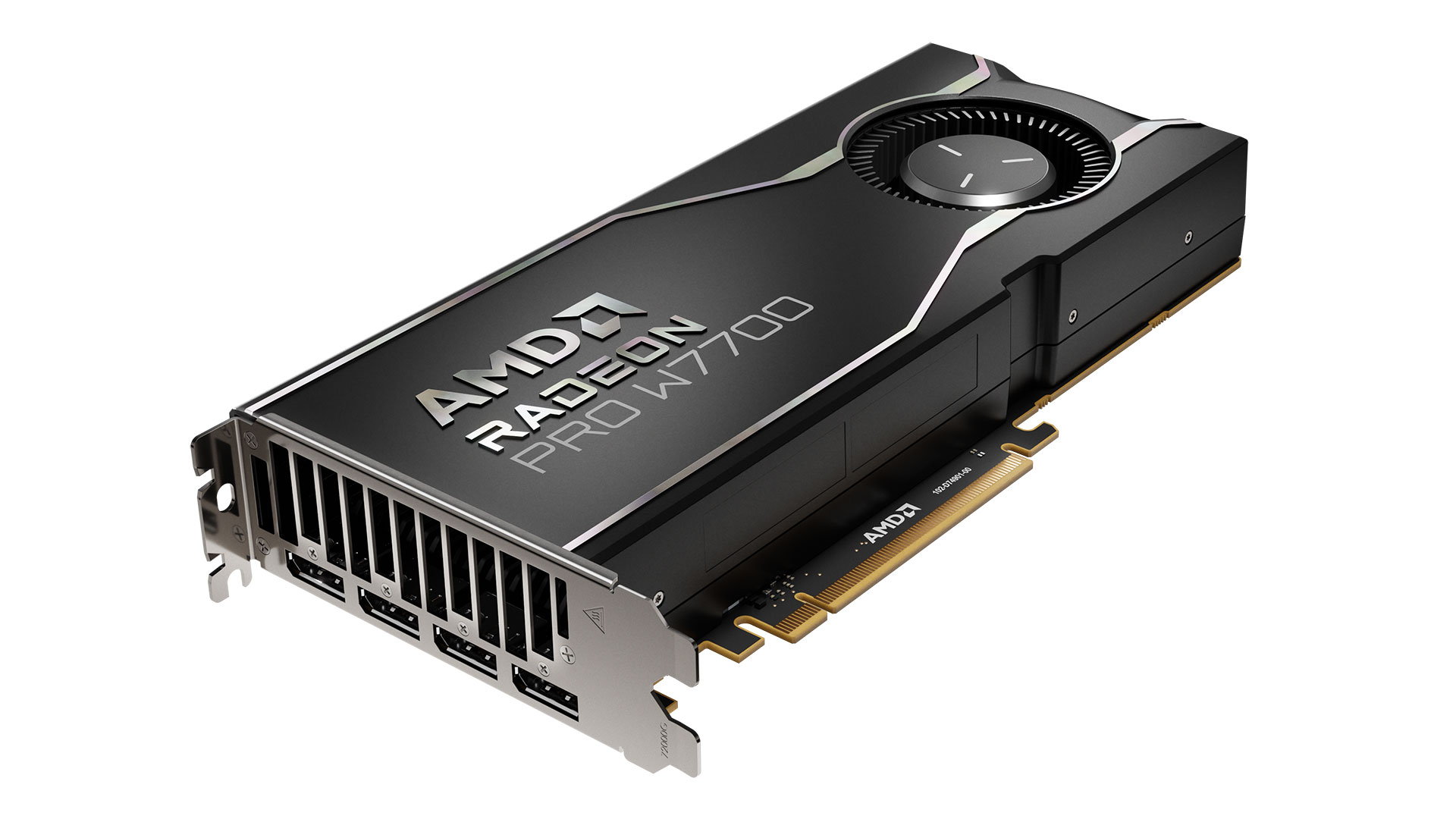
The AMD Radeon Pro W7700 16GB was revealed today at the Supercomputing 2023 conference. This will be AMD's first Navi 32-based workstation GPU, with a price of $999, and it should be available for purchase soon. (AMD lists a Q4 2023 timeframe, one which we're already sitting in.)
As a workstation part, we expect significantly higher prices than consumer GPUs. The core specifications appear to be roughly on par with the Radeon RX 7800 XT, which costs half as much, but with drivers that are better tuned for professional workloads. AMD dug itself a bit of a hole, however, as it already has a W7800 professional part, so it had to use the W7700 name on the newcomer. Here's a rundown of the specifications from the various Radeon Pro W7000-series parts.
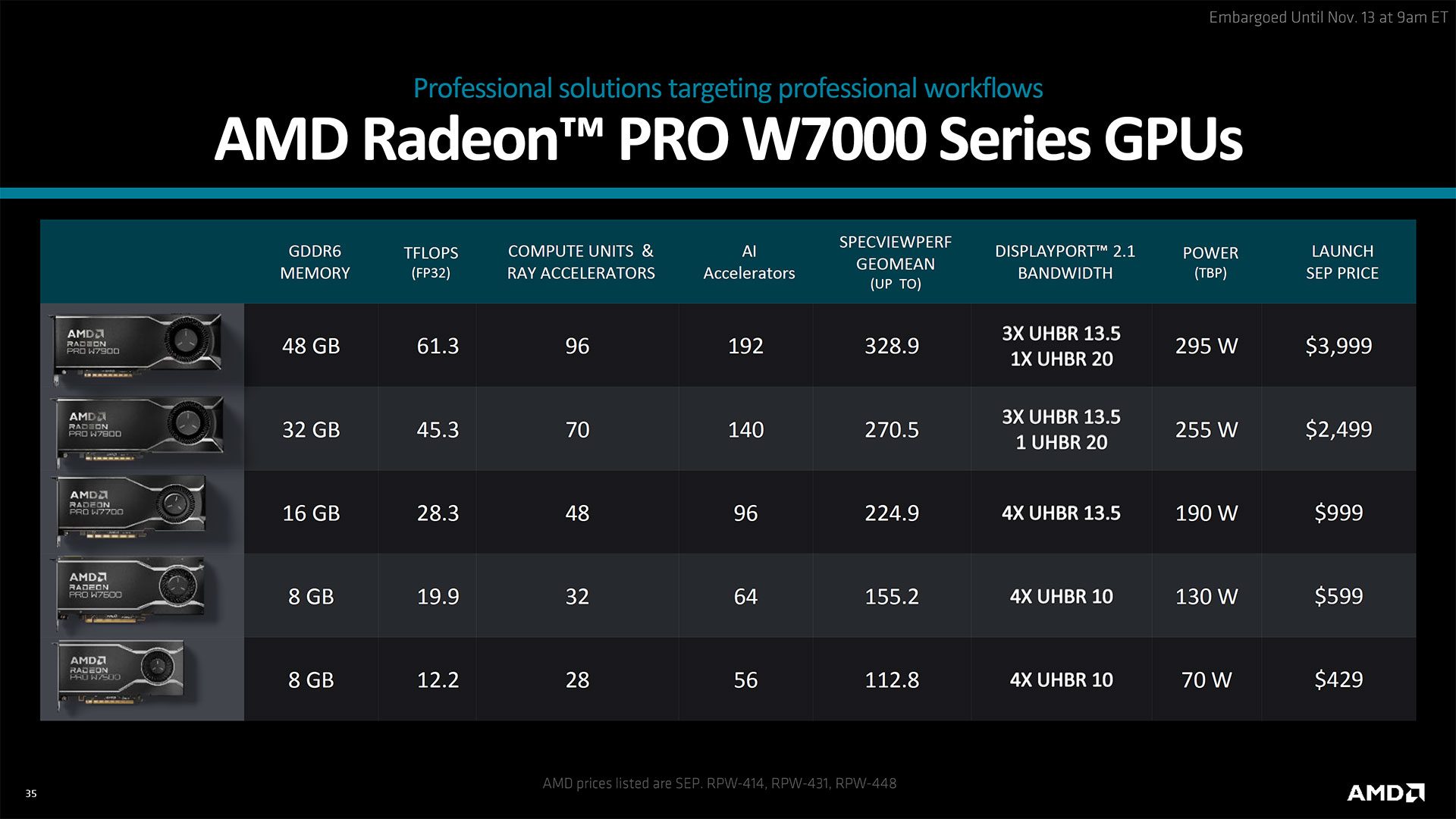
| Graphics Card | Radeon Pro W7900 | Radeon Pro W7800 | Radeon Pro W7700 | Radeon Pro W7600 | Radeon Pro W7500 |
|---|---|---|---|---|---|
| Architecture | Navi 31 | Navi 31 | Navi 32 | Navi 33 | Navi 33 |
| Process Technology | TSMC N5 + N6 | TSMC N5 + N6 | TSMC N5 + N6 | TSMC N6 | TSMC N6 |
| Transistors (Billion) | 45.6 + 6x 2.05 | 45.6 + 4x 2.05 | 28.1 + 4x 2.05 | 13.3 | 13.3 |
| Die size (mm^2) | 300 + 225 | 300 + 225 | 200 + 113 | 204 | 204 |
| Compute Units | 96 | 70 | 48 | 32 | 28 |
| GPU Cores (Shaders) | 6144 | 4480 | 3072 | 2048 | 1792 |
| AI Cores | 192 | 140 | 96 | 64 | 56 |
| Ray Tracing Cores | 96 | 70 | 48 | 32 | 28 |
| Boost Clock (MHz) | 2495 | 2525 | ~2295? | 2440 | 1700 |
| VRAM Speed (Gbps) | 18 | 18 | 18 | 18 | 11 |
| VRAM (GB) | 48 | 32 | 16 | 8 | 8 |
| VRAM Bus Width | 384 | 256 | 256 | 128 | 128 |
| L2 / Infinity Cache | 96 | 64 | 64 | 32 | 32 |
| ROPs | 192 | 192 | 96 | 64 | 64 |
| TMUs | 384 | 280 | 192 | 128 | 112 |
| TFLOPS FP32 (Boost) | 61.3 | 45.2 | 28.3 | 20.0 | 12.2 |
| TFLOPS FP16 | 122.6 | 90.4 | 56.5 | 40 | 24.4 |
| Bandwidth (GBps) | 864 | 576 | 576 | 288 | 176 |
| TDP (watts) | 295 | 260 | 190 | 130 | 70 |
| Launch Date | Apr 2023 | May 2023 | Nov 2023 | Aug 2023 | Aug 2023 |
| Launch Price | $3,999 | $2,499 | $999 | $599 | $429 |
The new W7700 provides an interesting blend of potential performance and features. It has the same memory bandwidth as the W7800, for example, but half the capacity. It also has the same amount of Infinity Cache (L3). That's because both configurations use four MCDs (Memory Cache Dies), though the W7800 has the larger Navi 31 GCD (Graphics Compute Die) while the W7700 uses Navi 32. But the price of the W7700 lands significantly below the high-end professional GPUs at just $999.
AMD was quick to make comparisons with Nvidia's professional GPU lineup, and as you'd expect for such comparisons, the W7700 delivers better performance at a lower price. SPECviewperf is one of the examples, and AMD's own numbers put the aggregate performance of the W7700 well ahead of the previous generation Nvidia parts, and also ahead of the Nvidia 4000 SFF Ada.
One aspect of the performance and specifications comparison that's not in AMD's favor is the power use. The 4000 SFF Ada only needs 70W, compared to 190W for the W7700. It's not as big of a gap against Nvidia's previous generation A5000, A4500, and A4000, though it's odd that AMD wouldn't include Nvidia's newer RTX 5000, 4500, and 4000 parts in that comparison.
By choosing to stick with a single GDDR6 chip per MCD, AMD's normal memory capacity advantage that we see in the consumer sector evaporates. The W7800 sits at a full 32GB (two 2GB chips per MCD), while the W7700 cuts that in half to 16GB. Nvidia's competing parts thus end up with a memory capacity advantage, though that doesn't mean they'll always be faster.

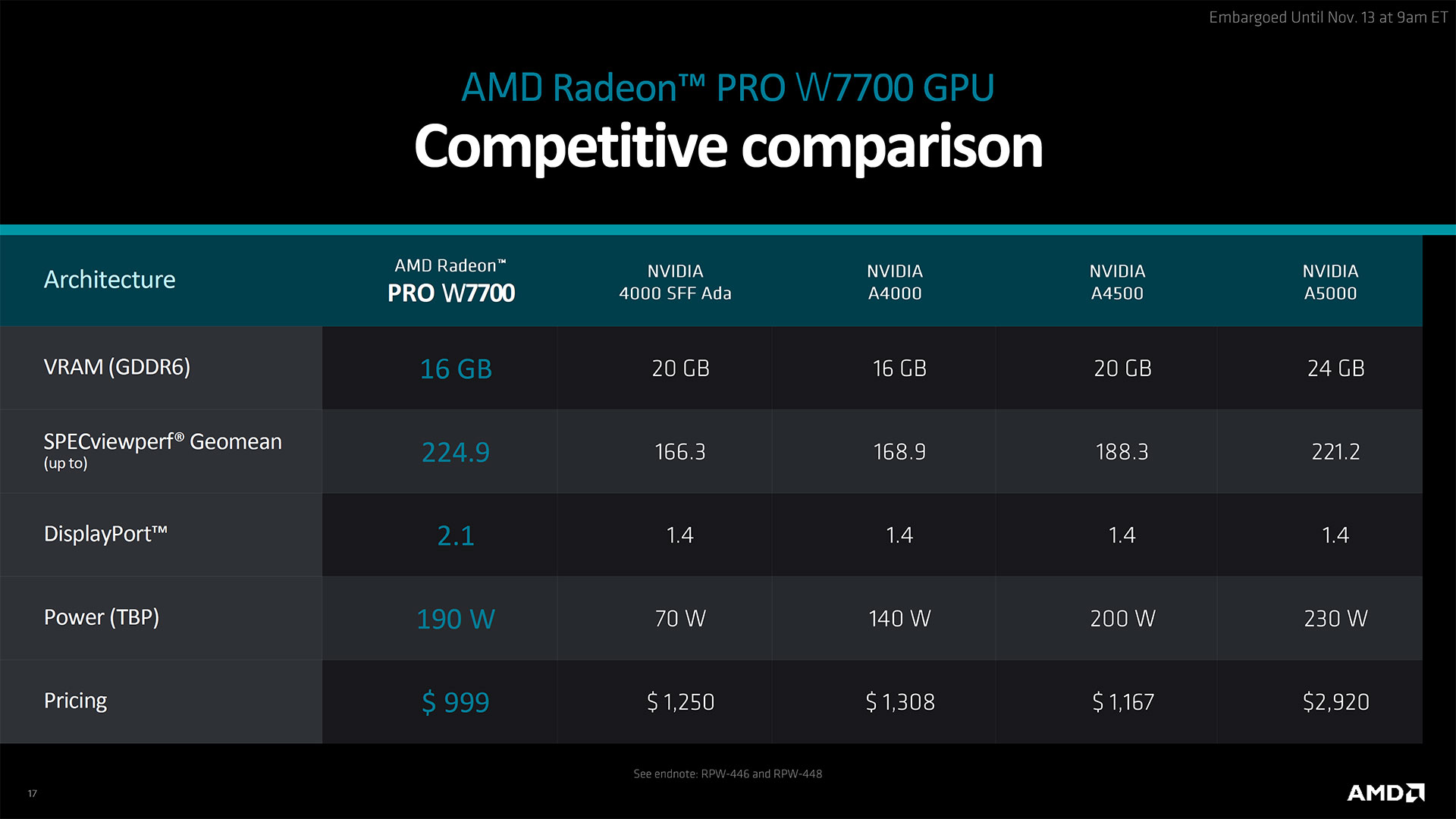
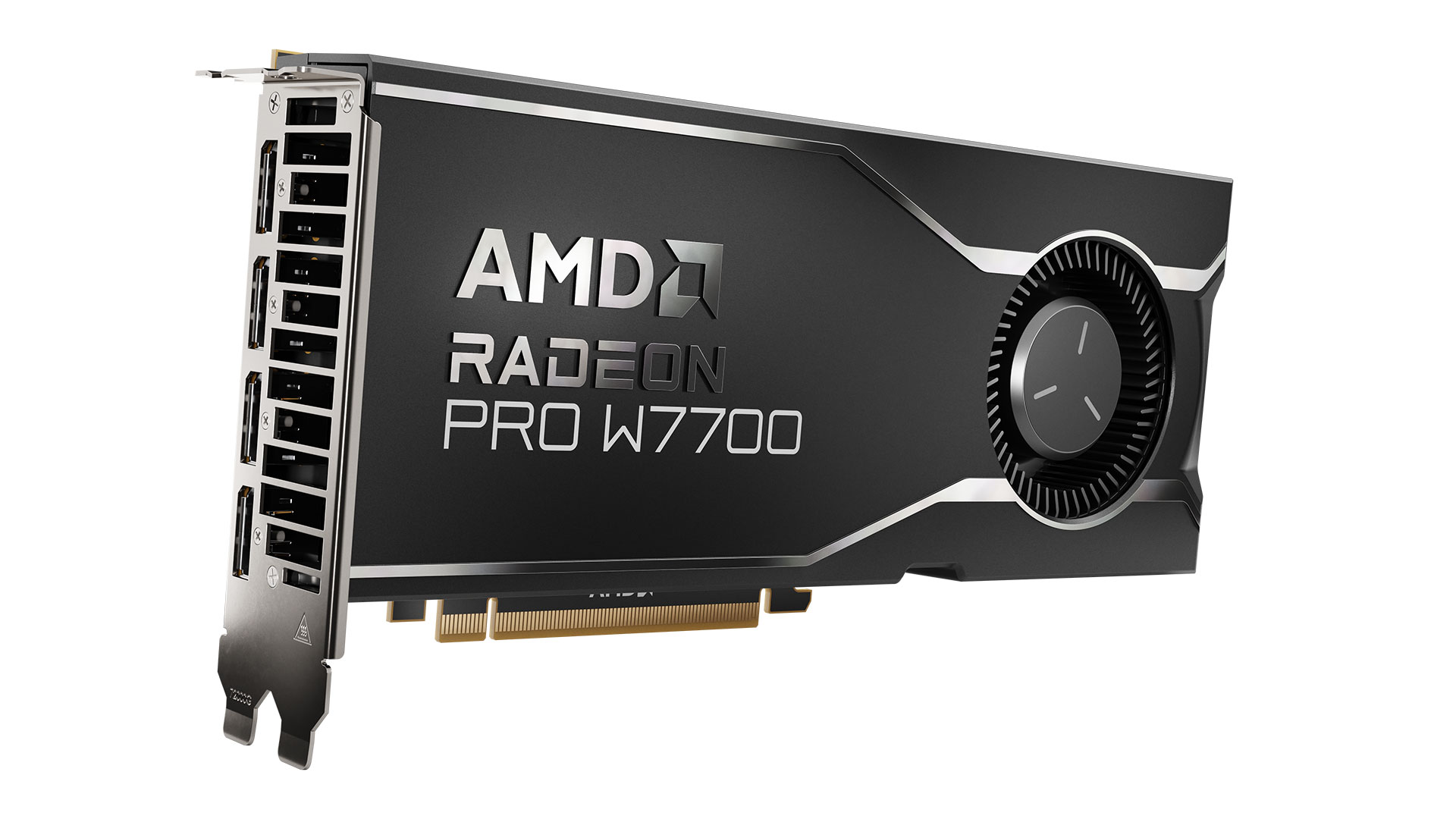
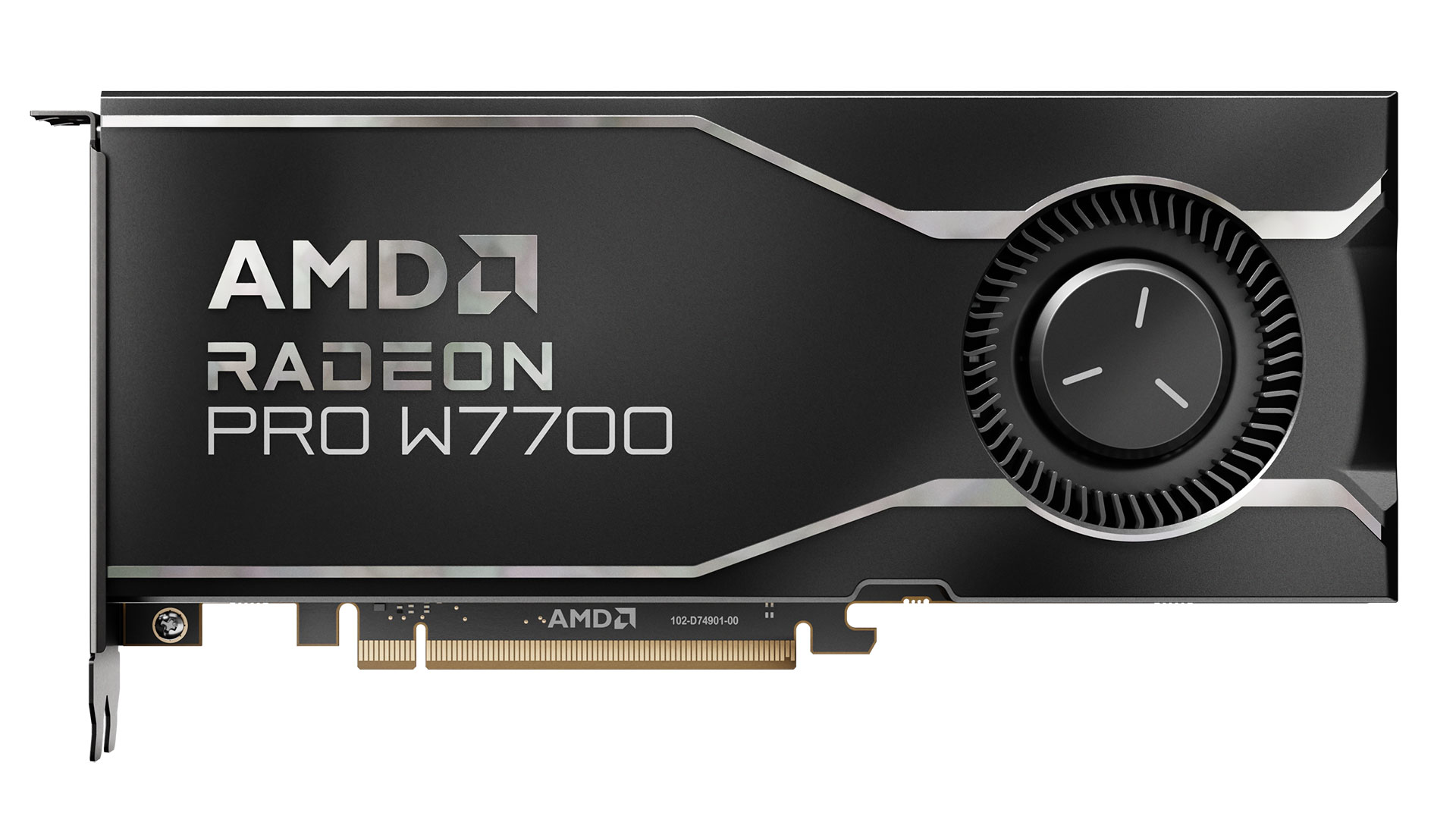

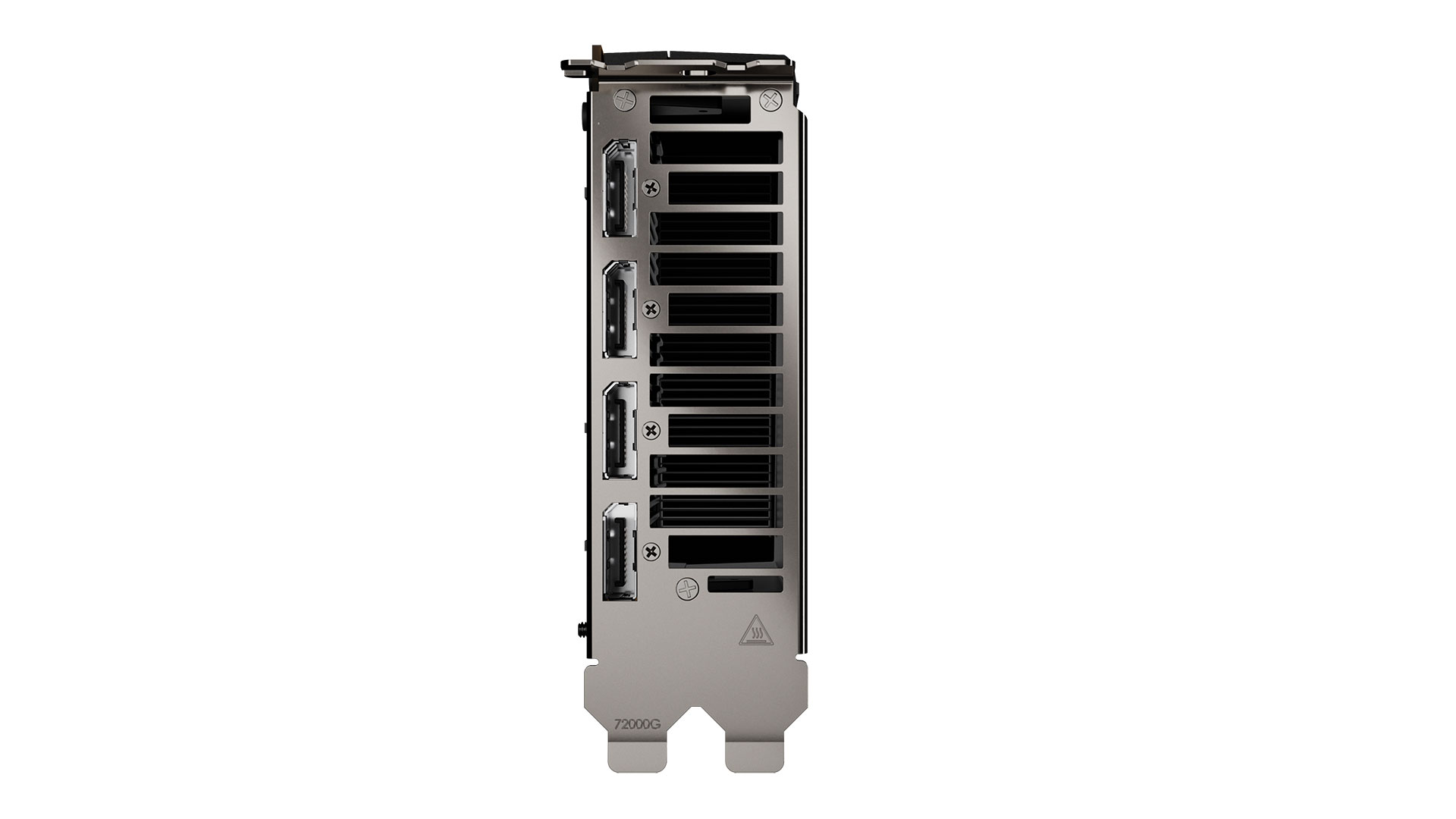
AMD's own tests show the W7700 slightly passing the Nvidia A5000 in SPECviewperf, though we don't get the individual numbers for that GPU. The W7700 also has a healthy lead in every individual test, with the exception of Siemens NX where it comes in slightly behind the A4000 and A4500. That's an interesting change compared to consumer parts, where the Nvidia GPUs really struggle in that particular workload — check out our RX 7700 XT Professional Tests for more details.
Besides performance metrics, AMD also offers four DisplayPort 2.1 UHBR13.5 ports (54 Gbps each) on the W7700, while the W7800 and W7900 each have a single UHBR20 port (80 Gbps) along with the three UHBR13.5 ports. Nvidia GPUs all remain with DisplayPort 1.4a connectivity, which means they have to depend on Display Stream Compression functionality for higher refresh rates and resolutions.
There are additional benchmarks from AMD, along with other information, in the full slide deck, which we've included below for reference.
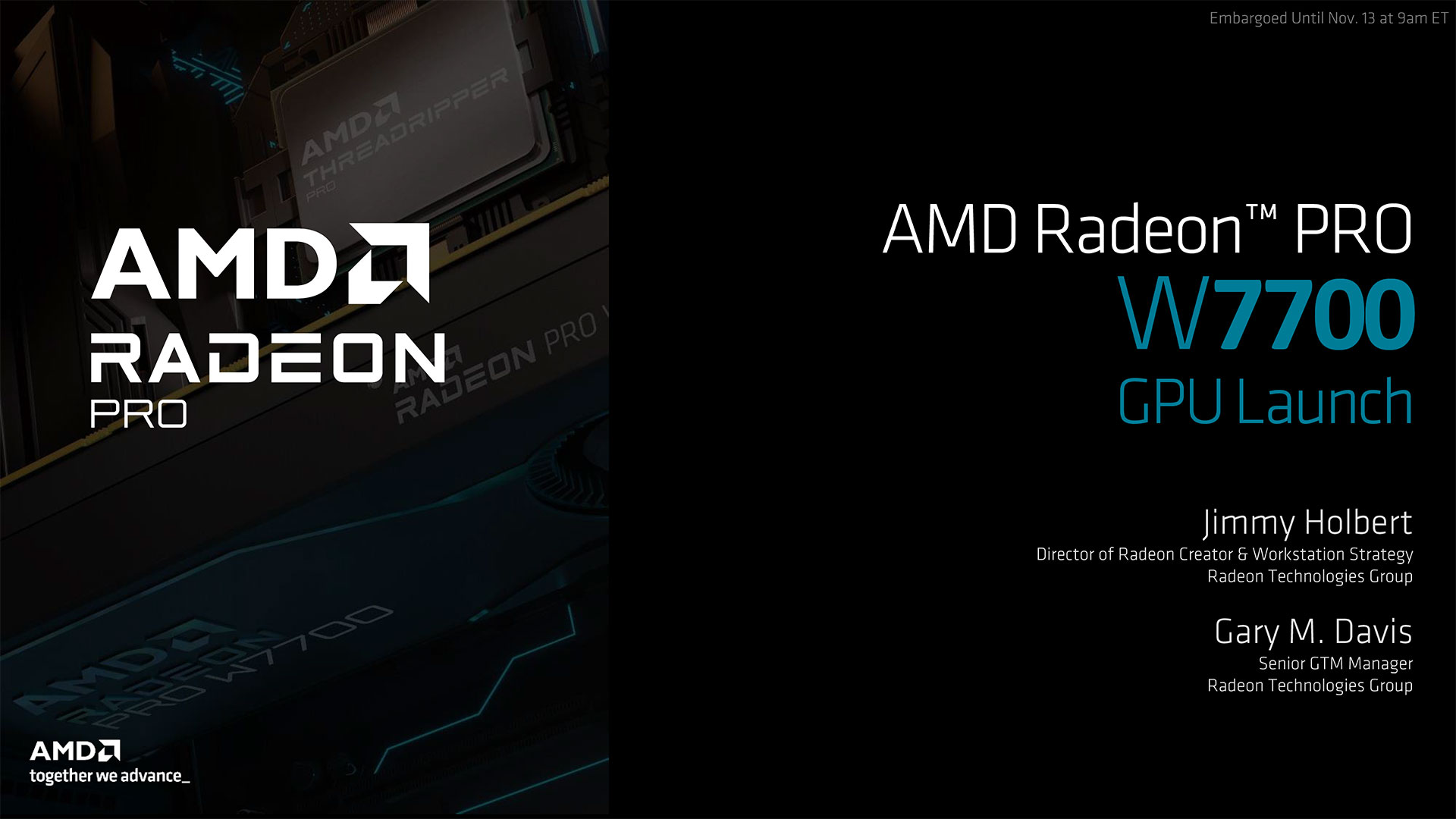

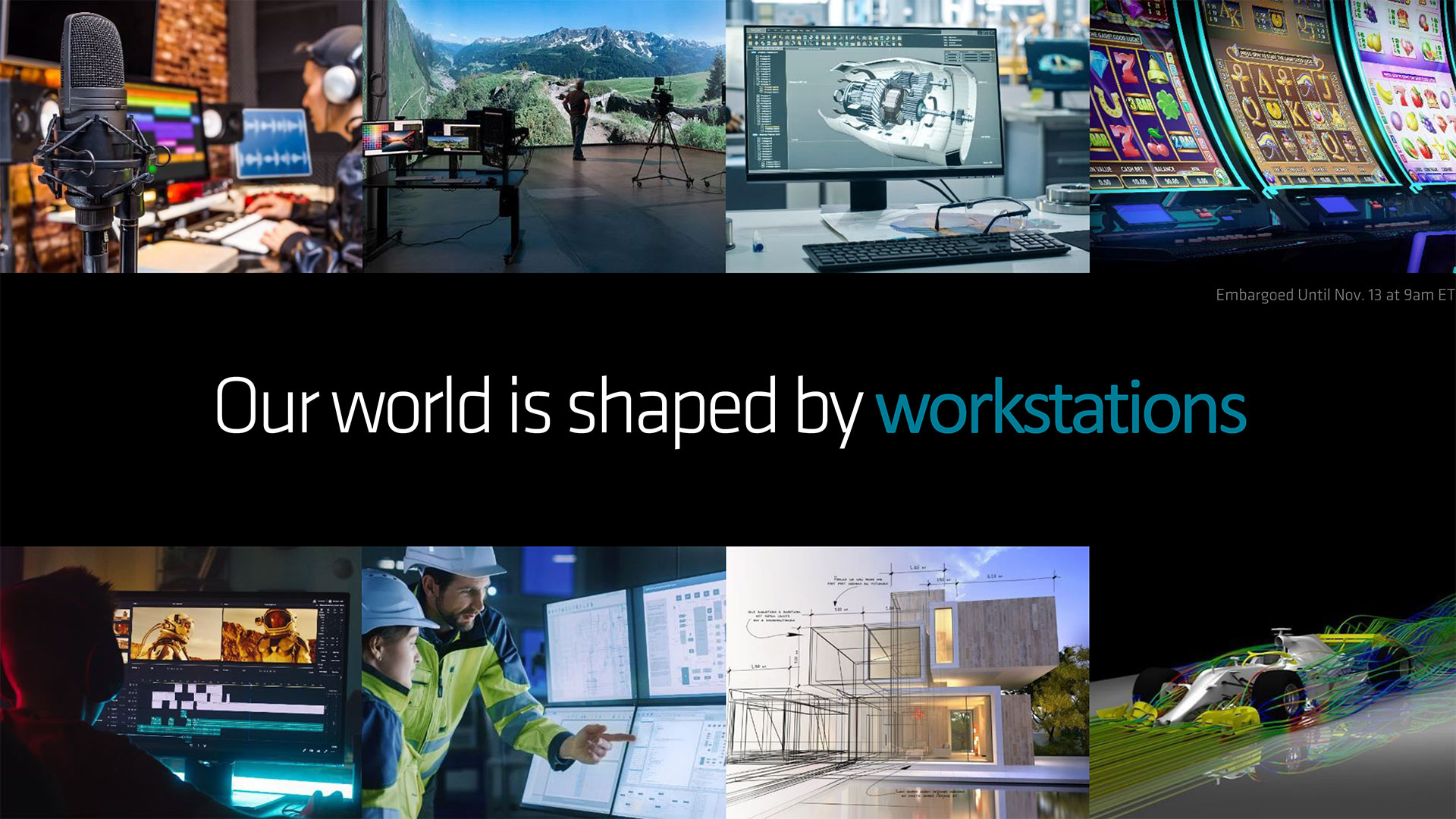
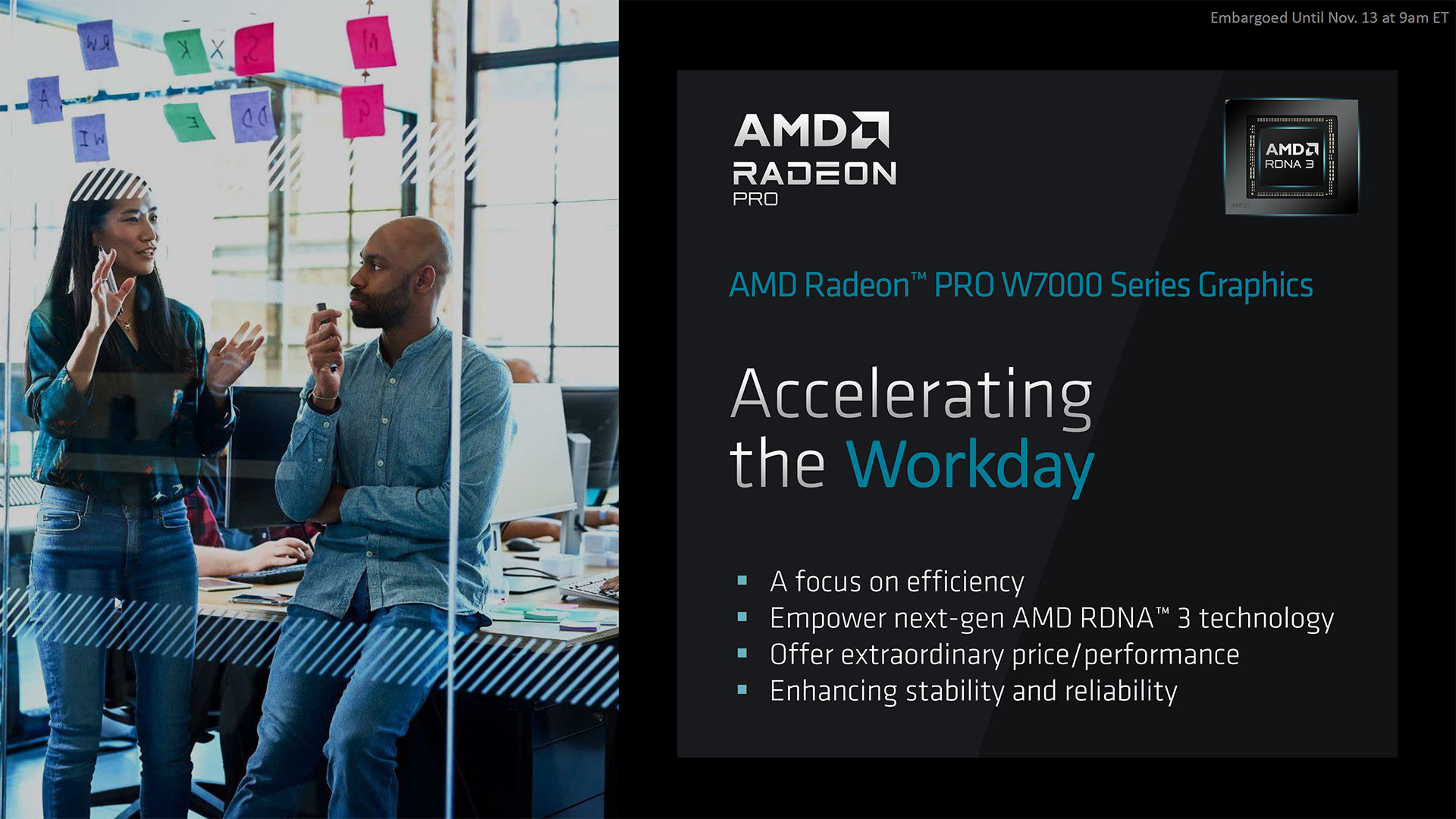
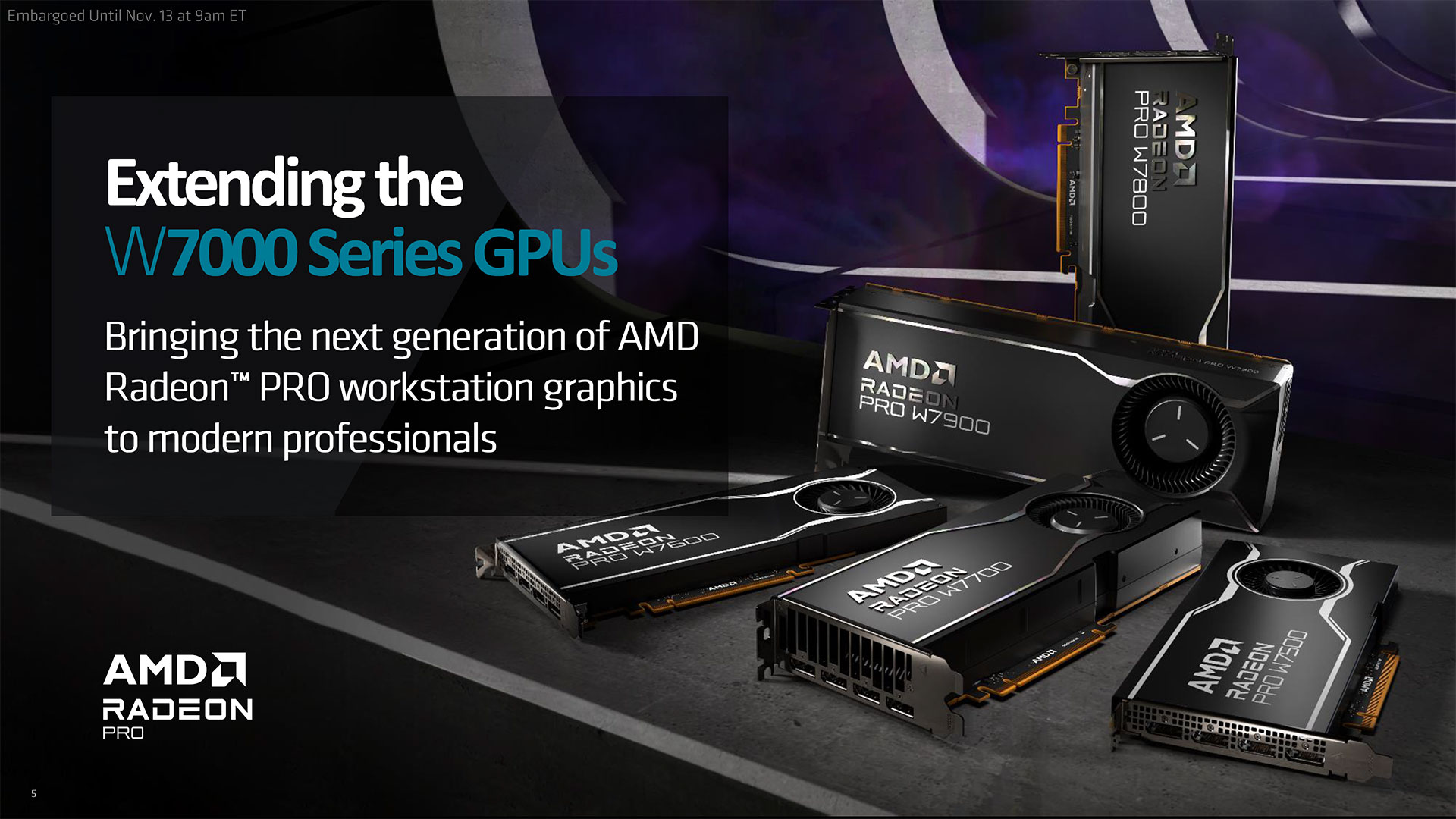

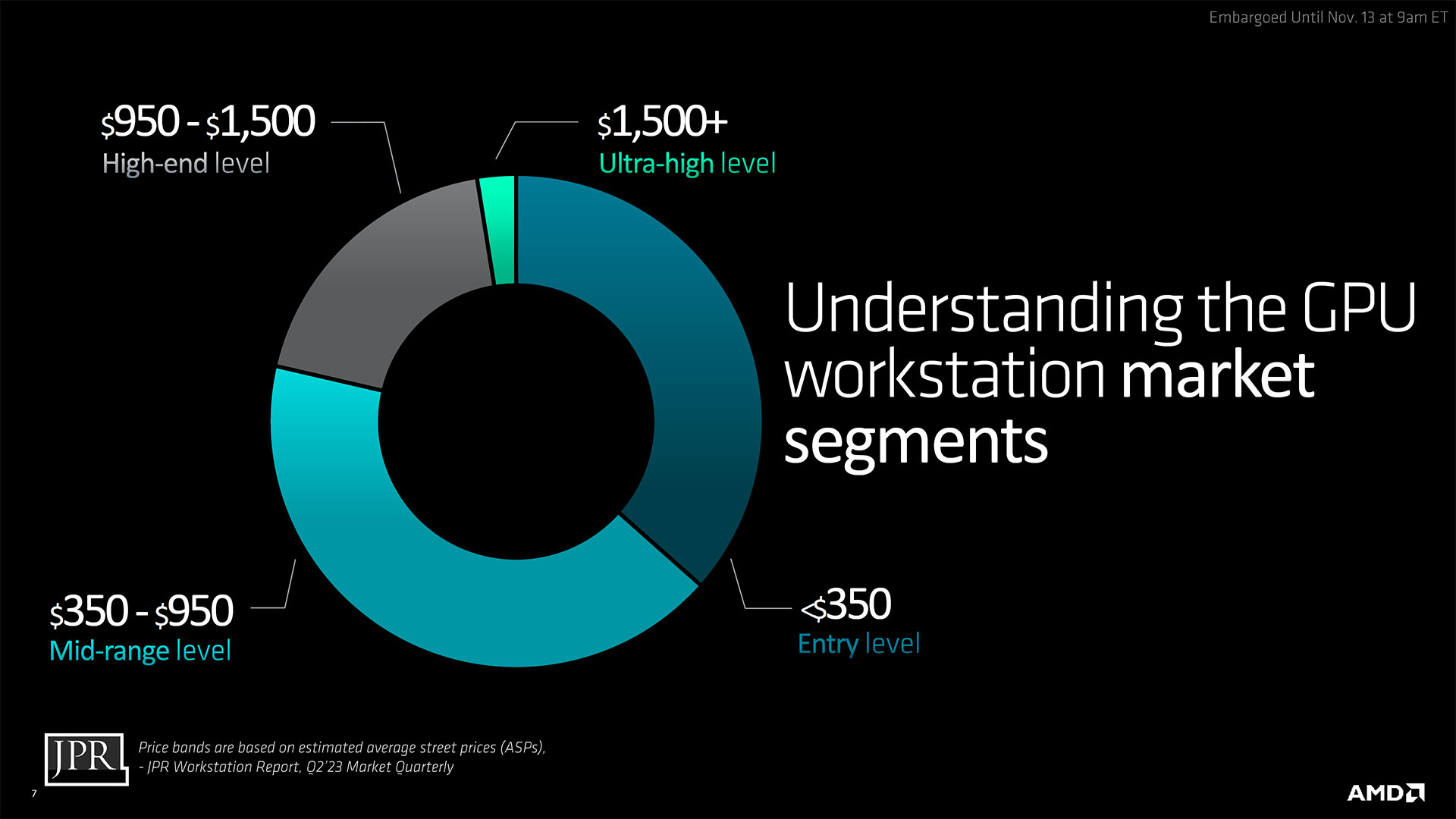
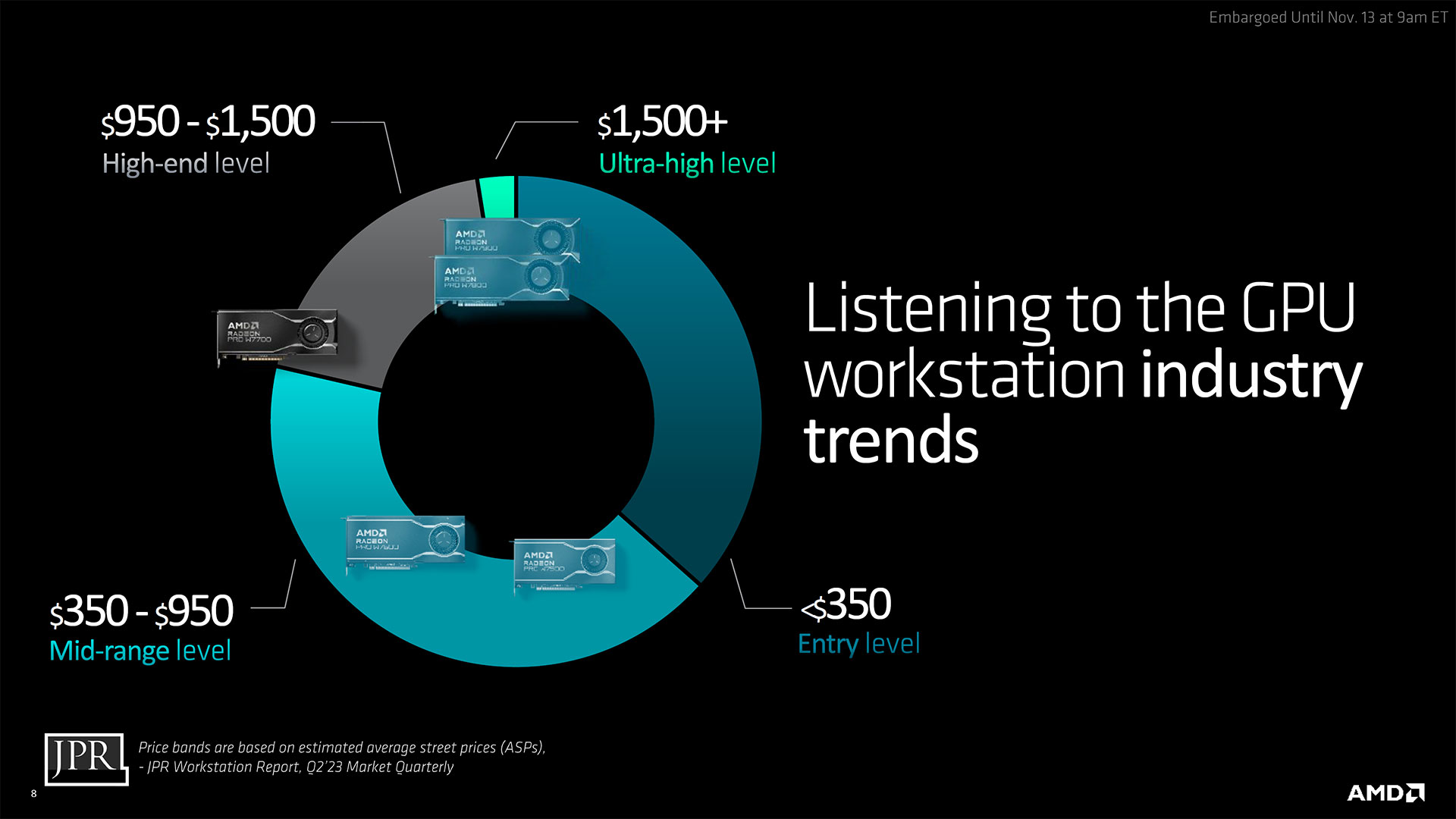
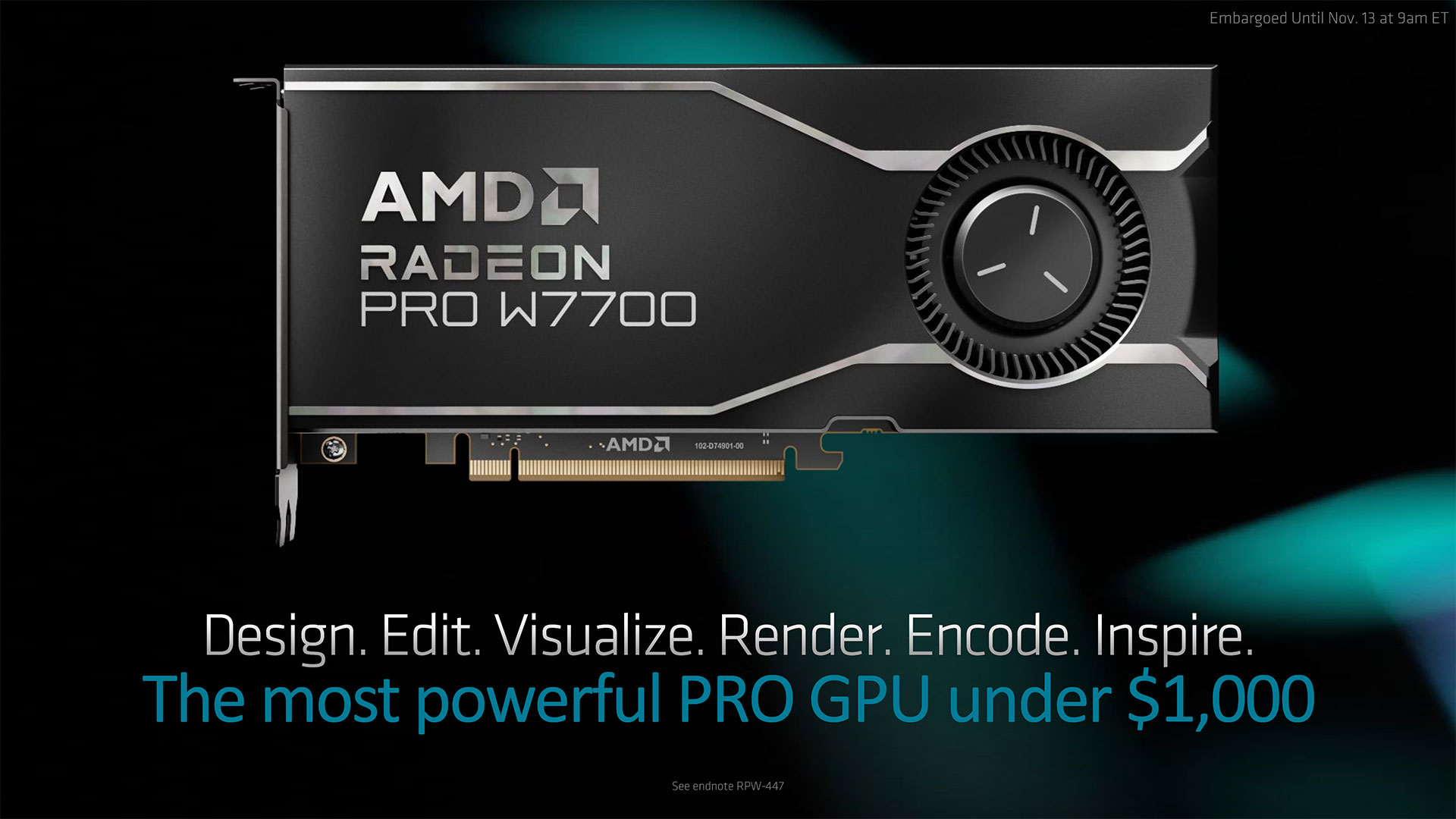









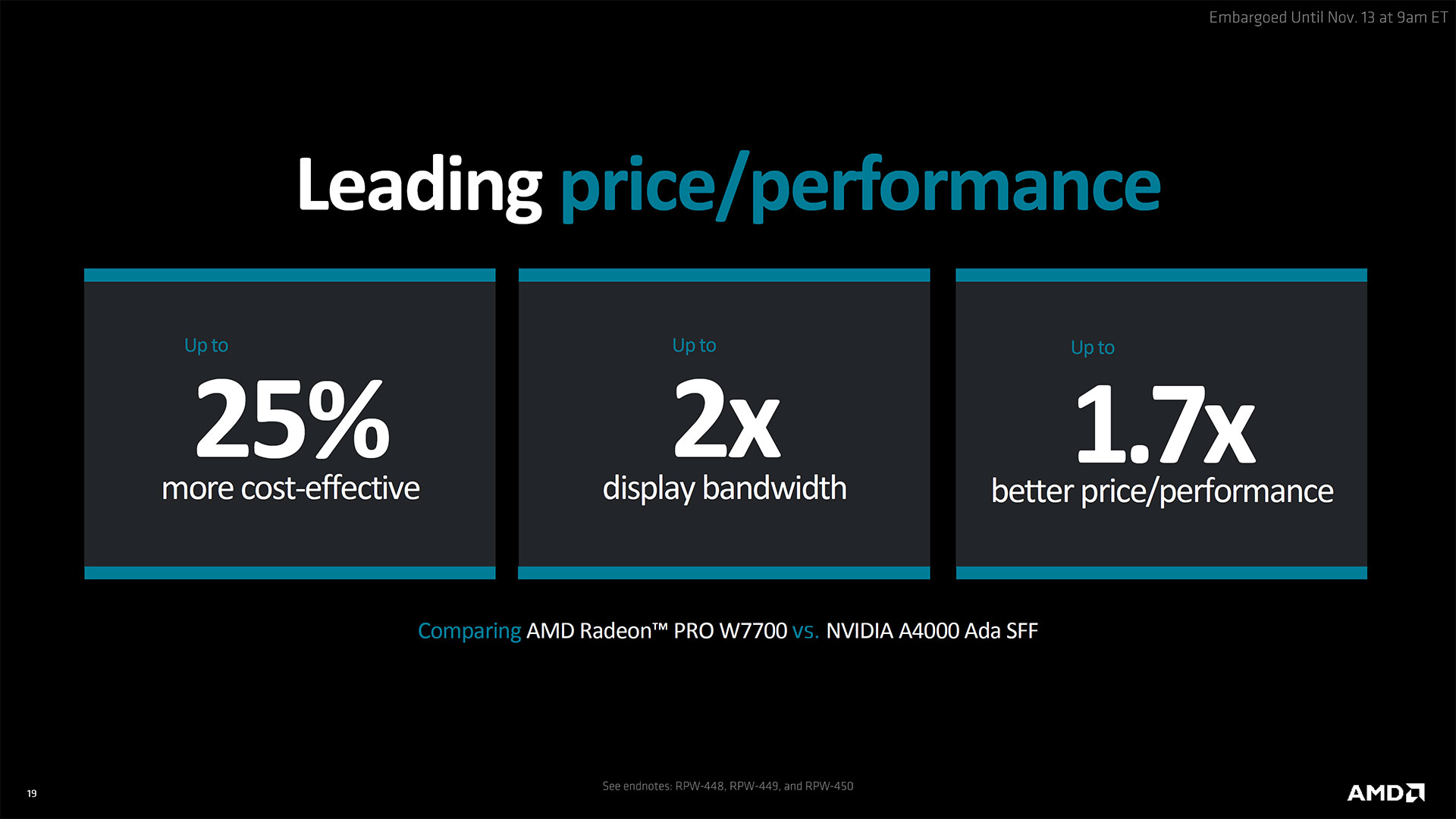




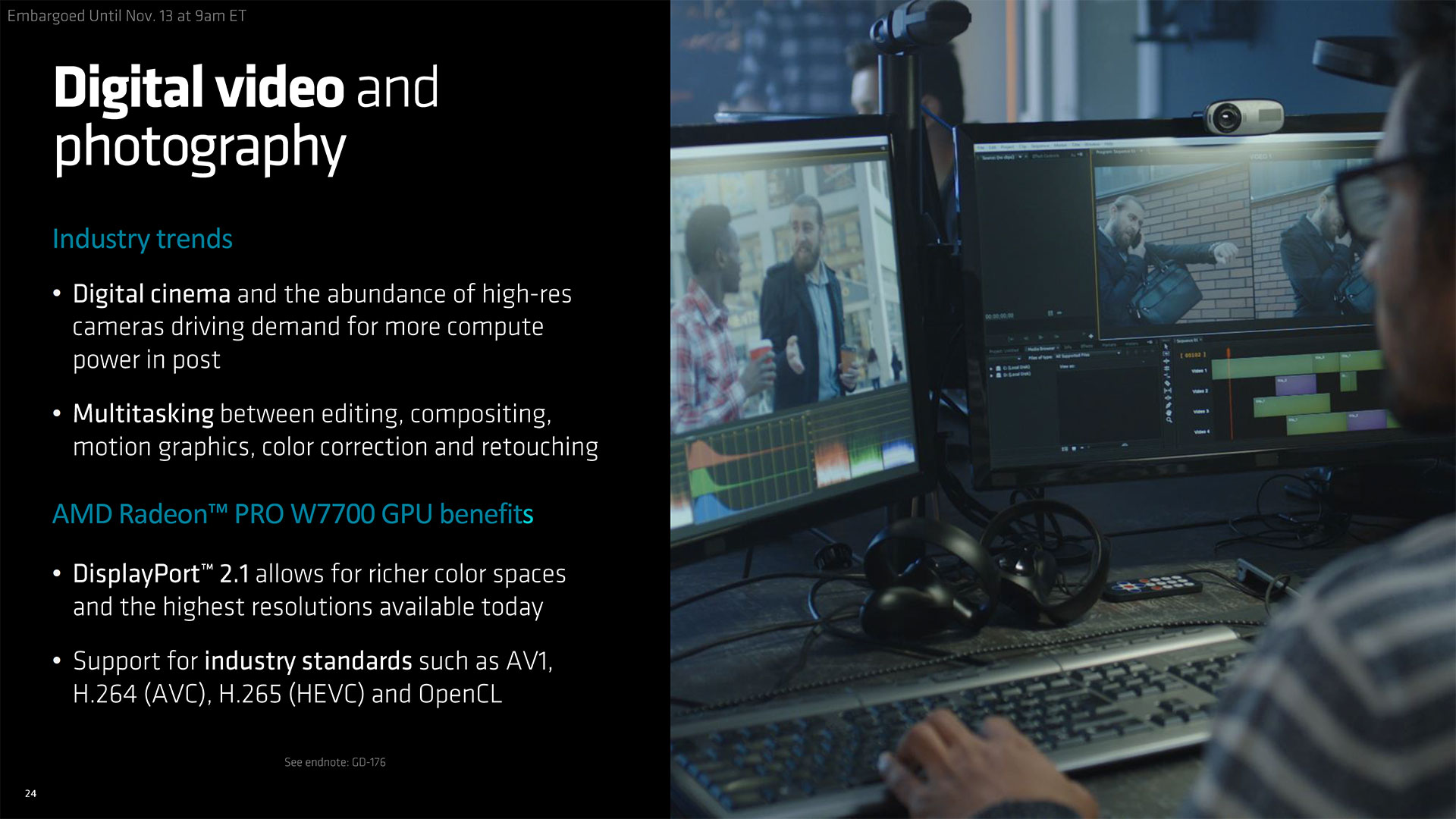
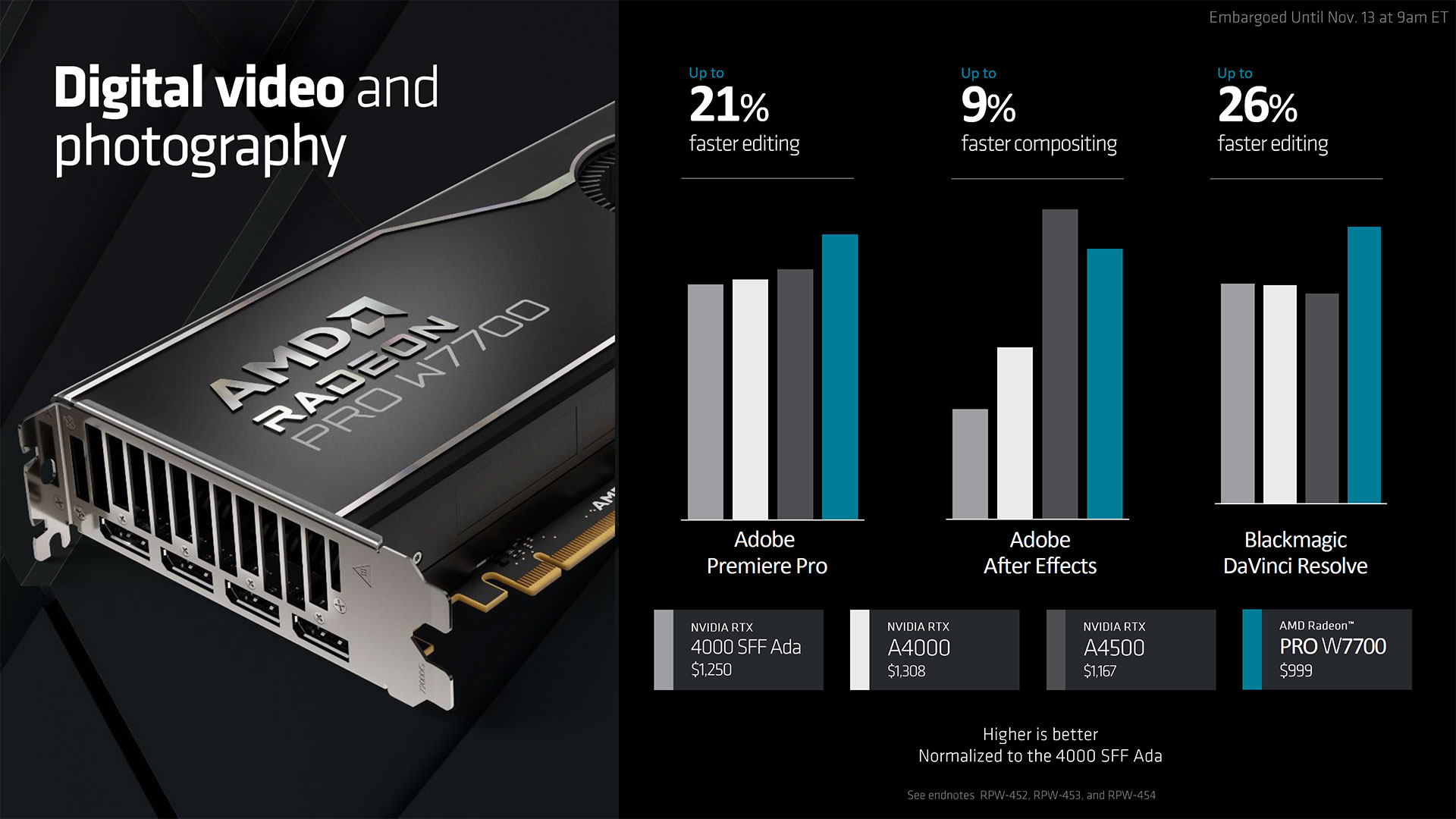
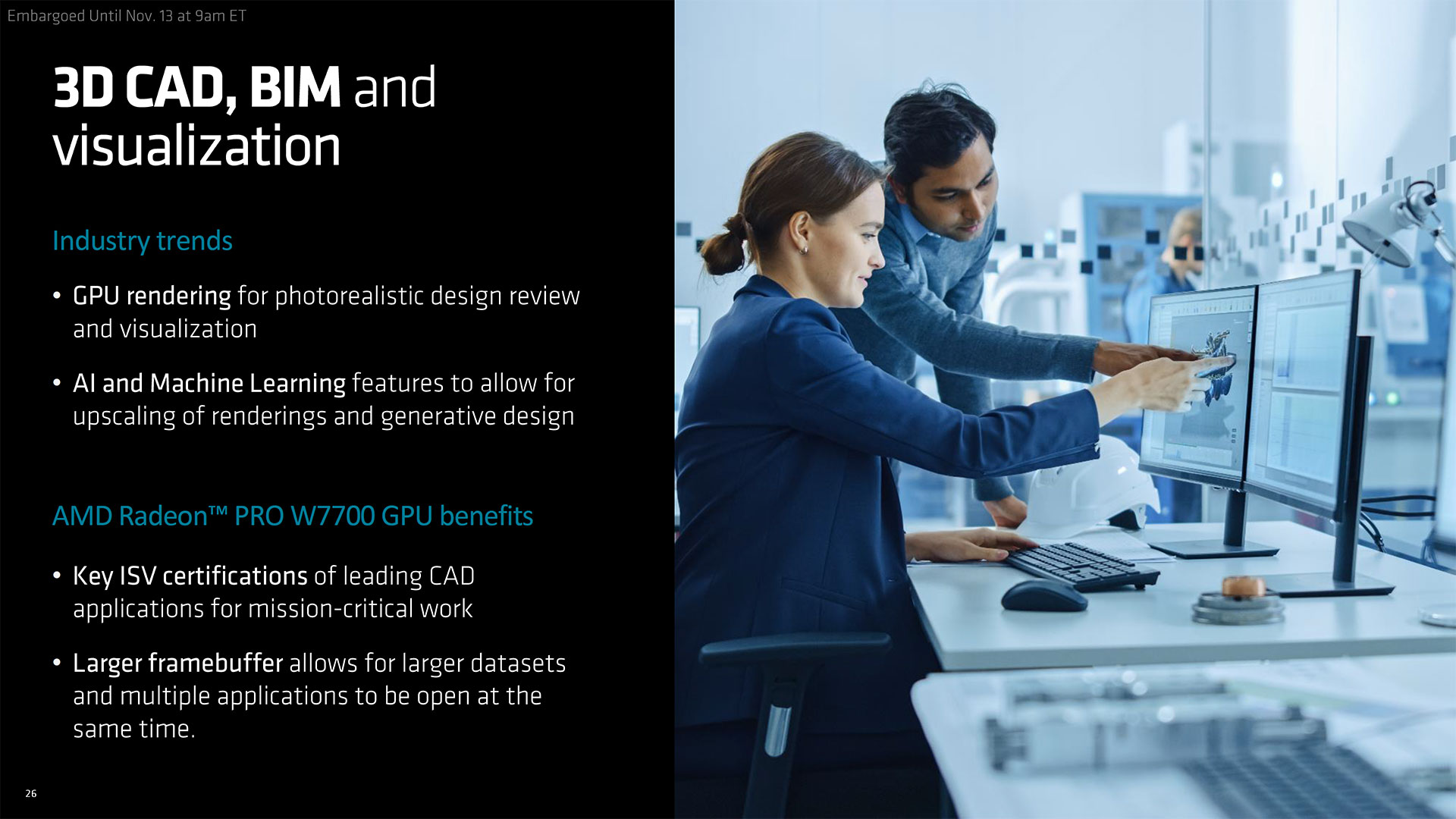
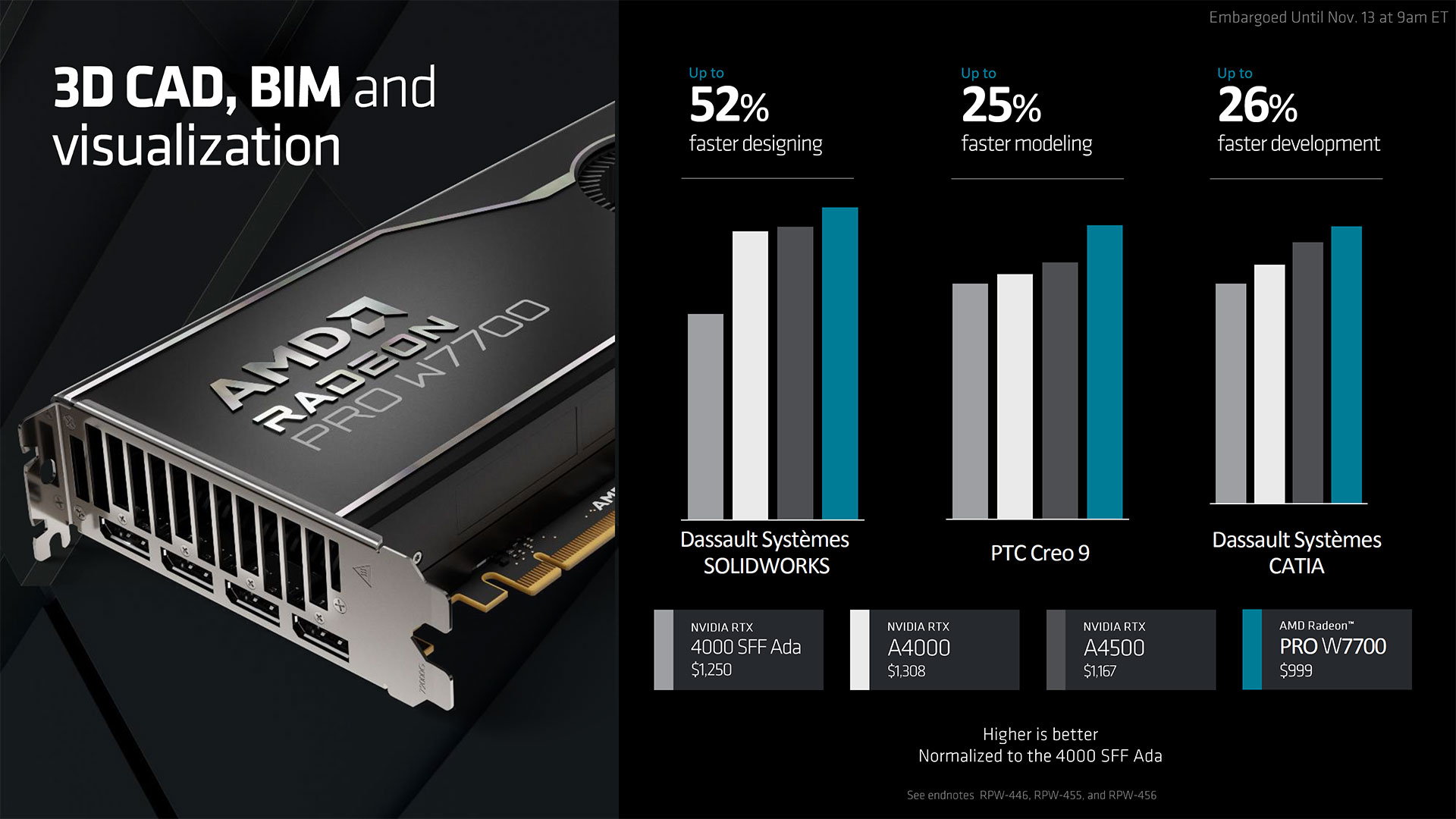
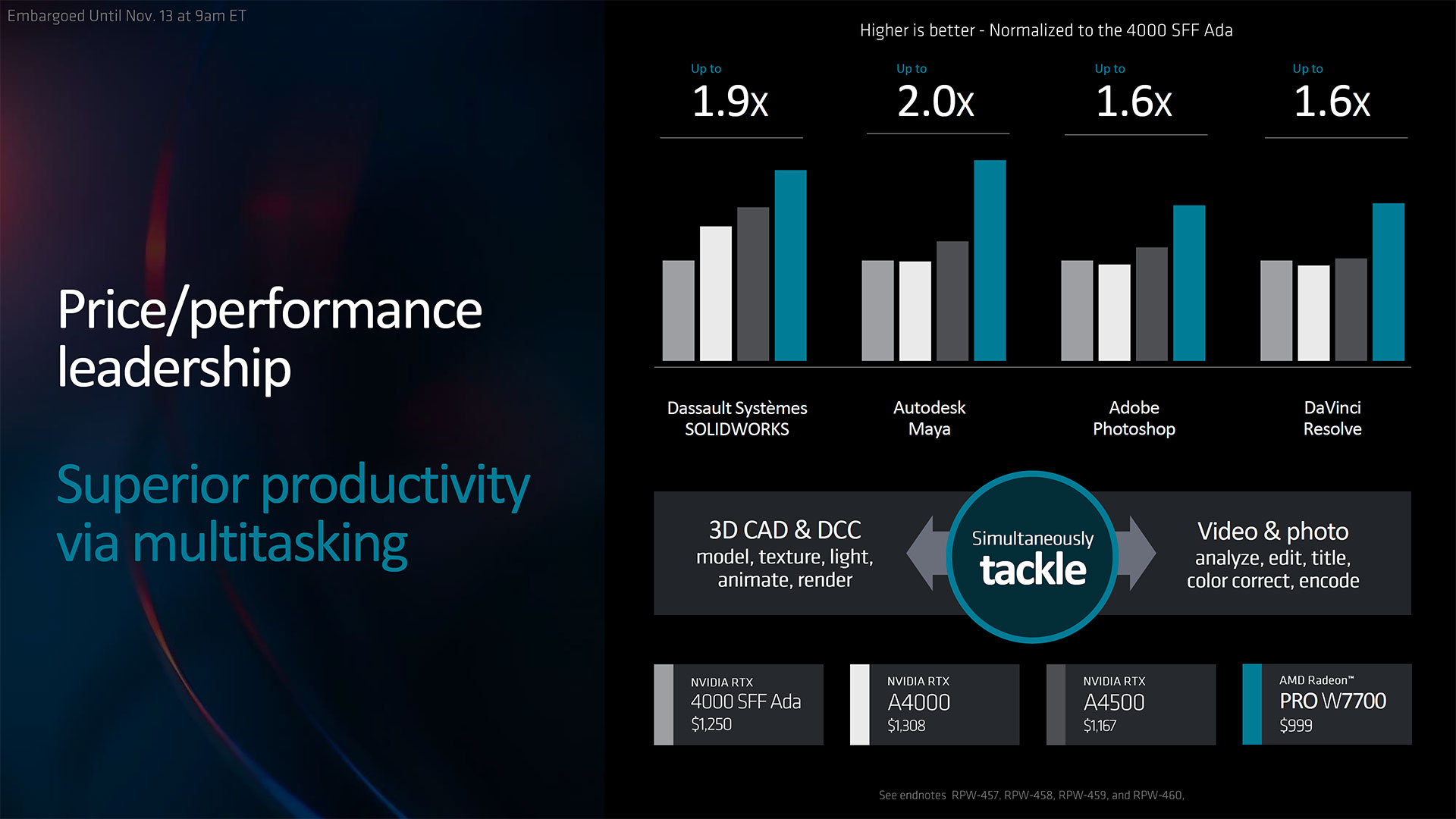
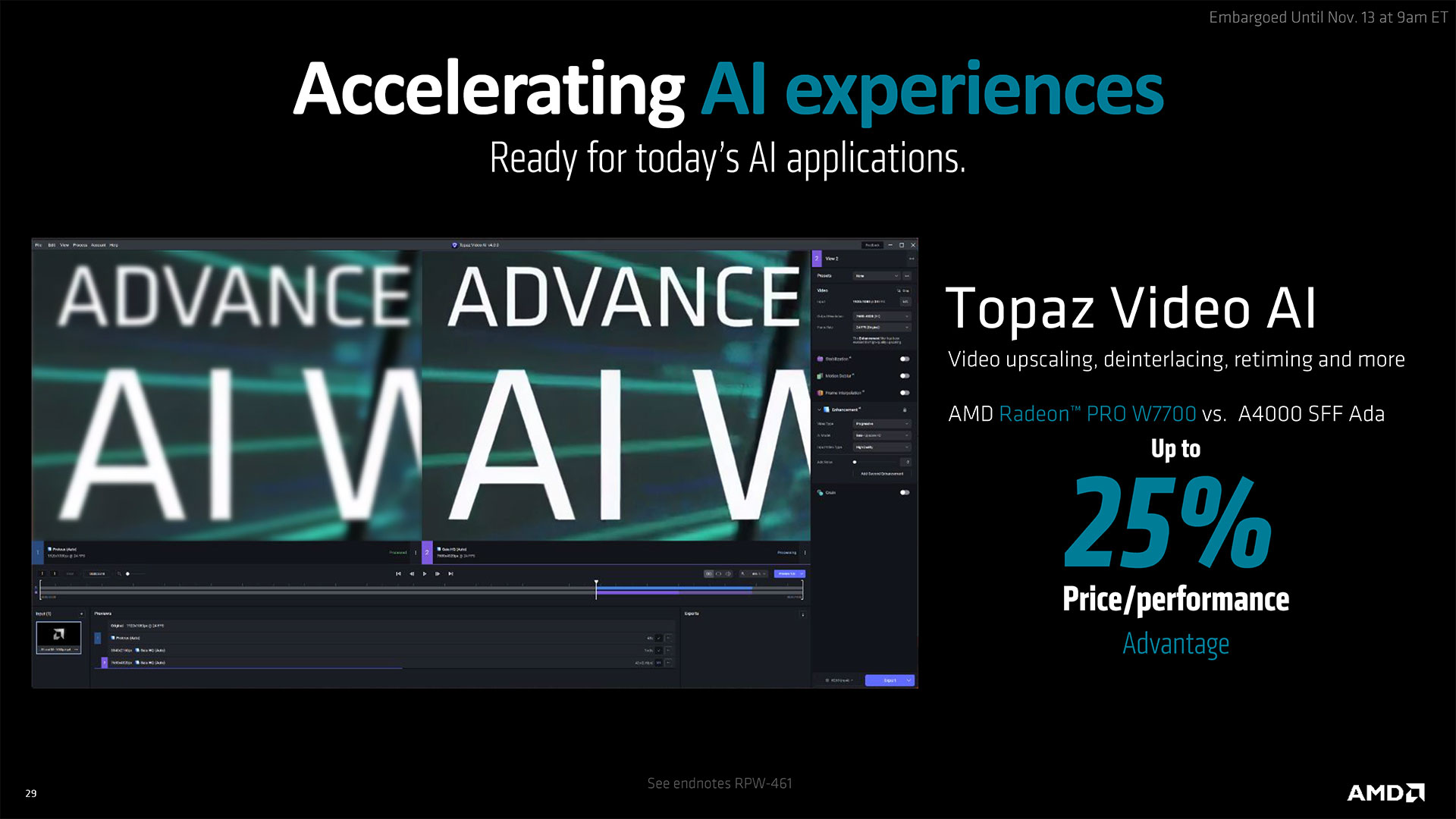
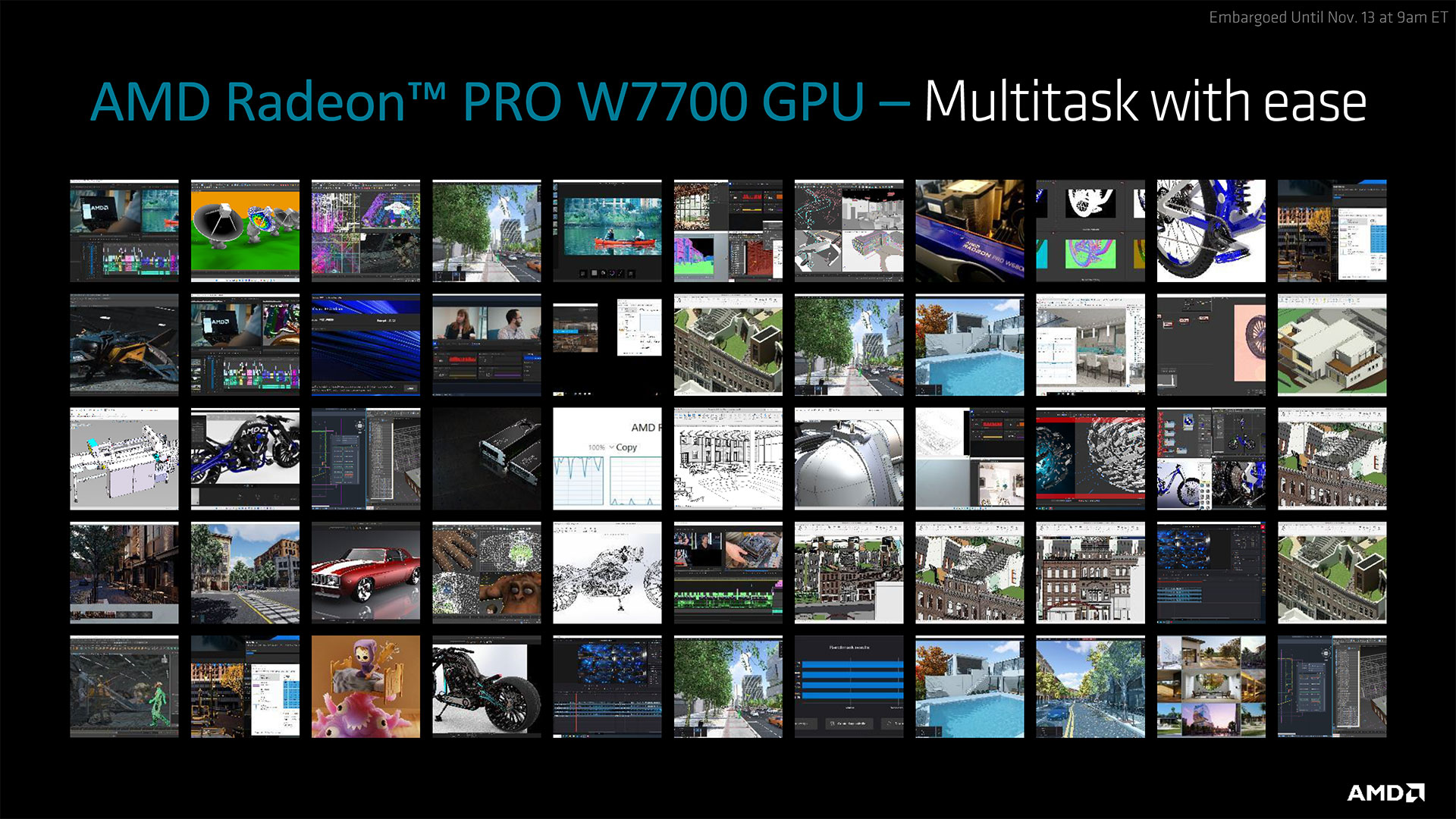

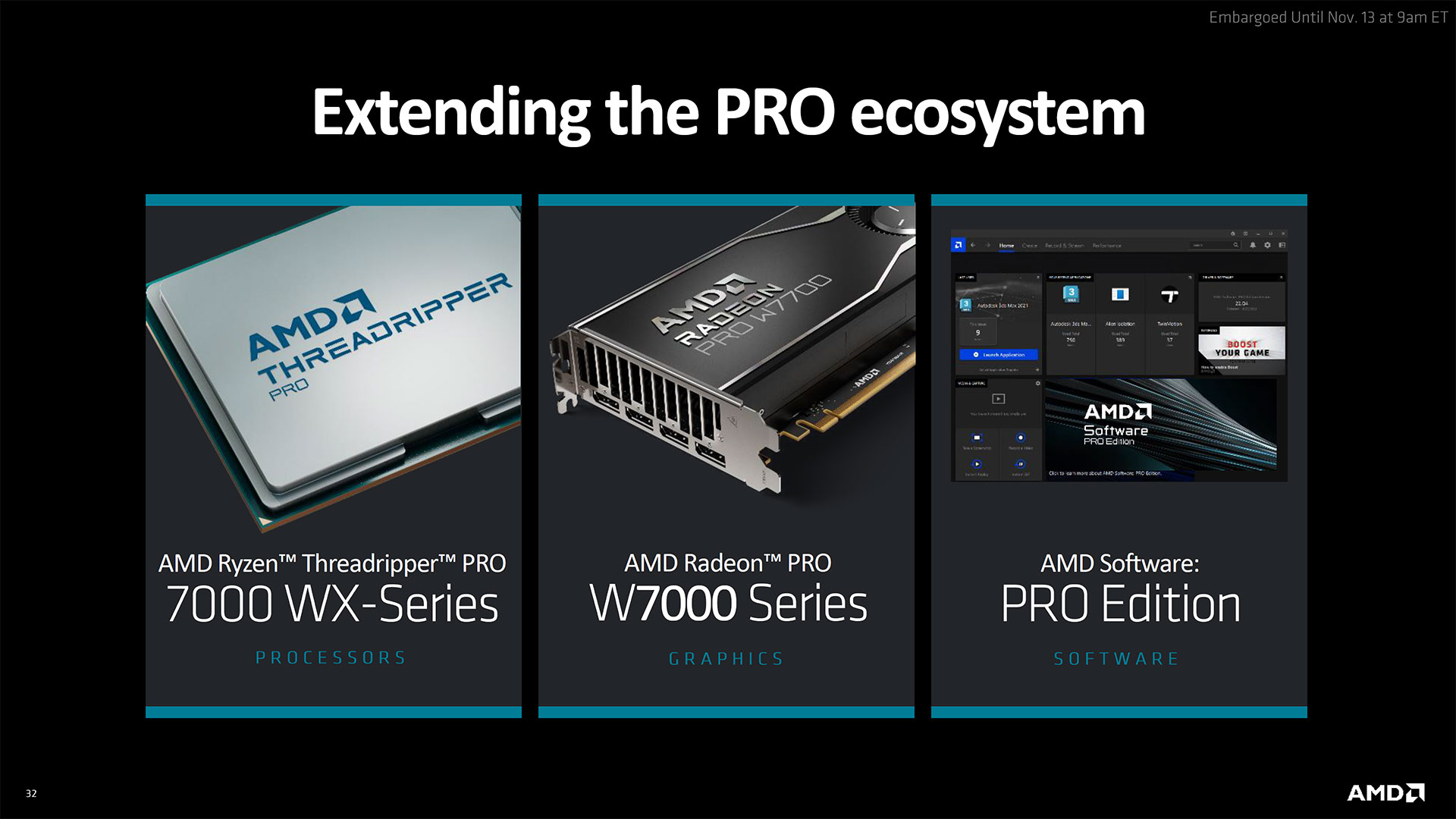

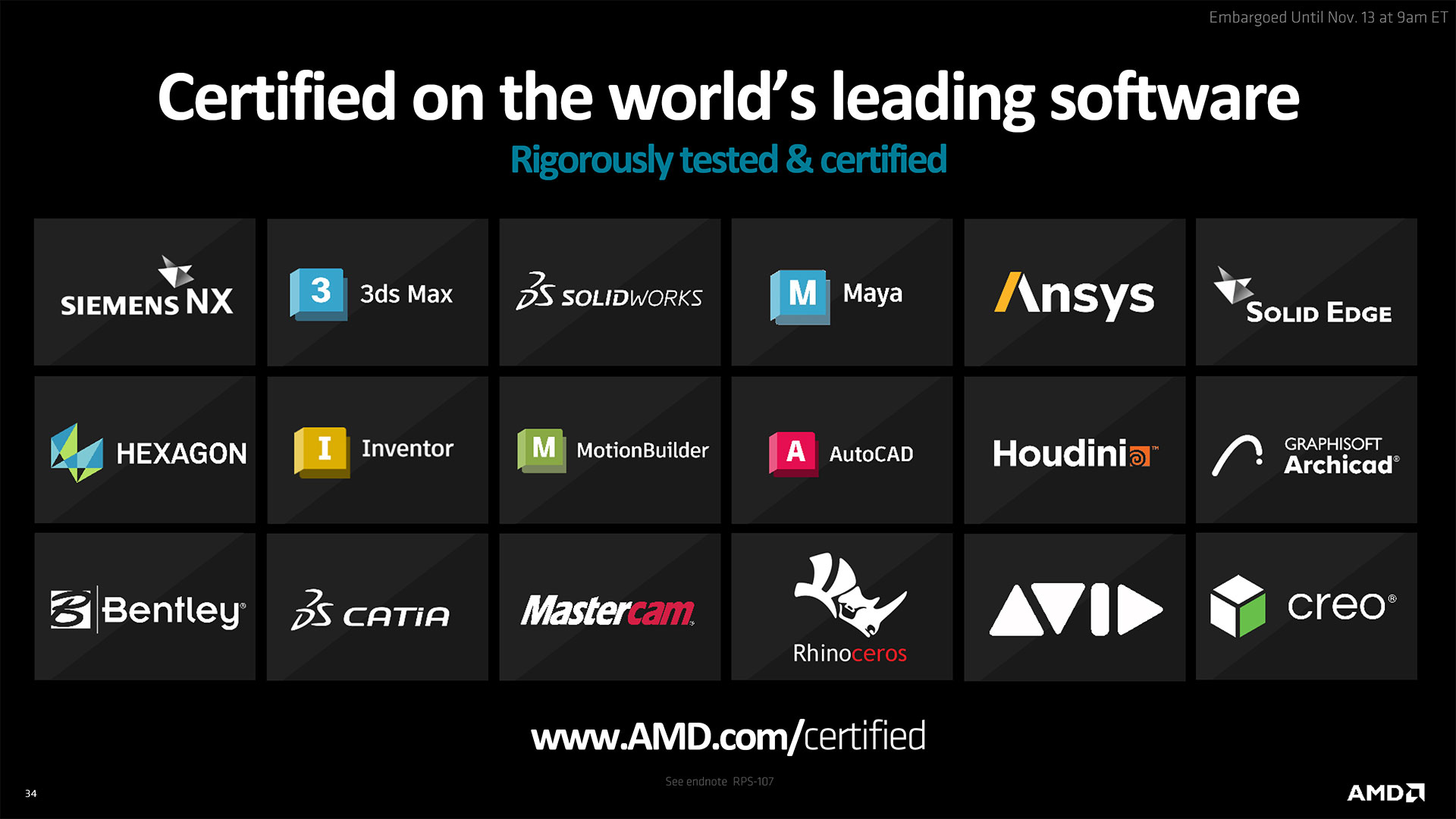
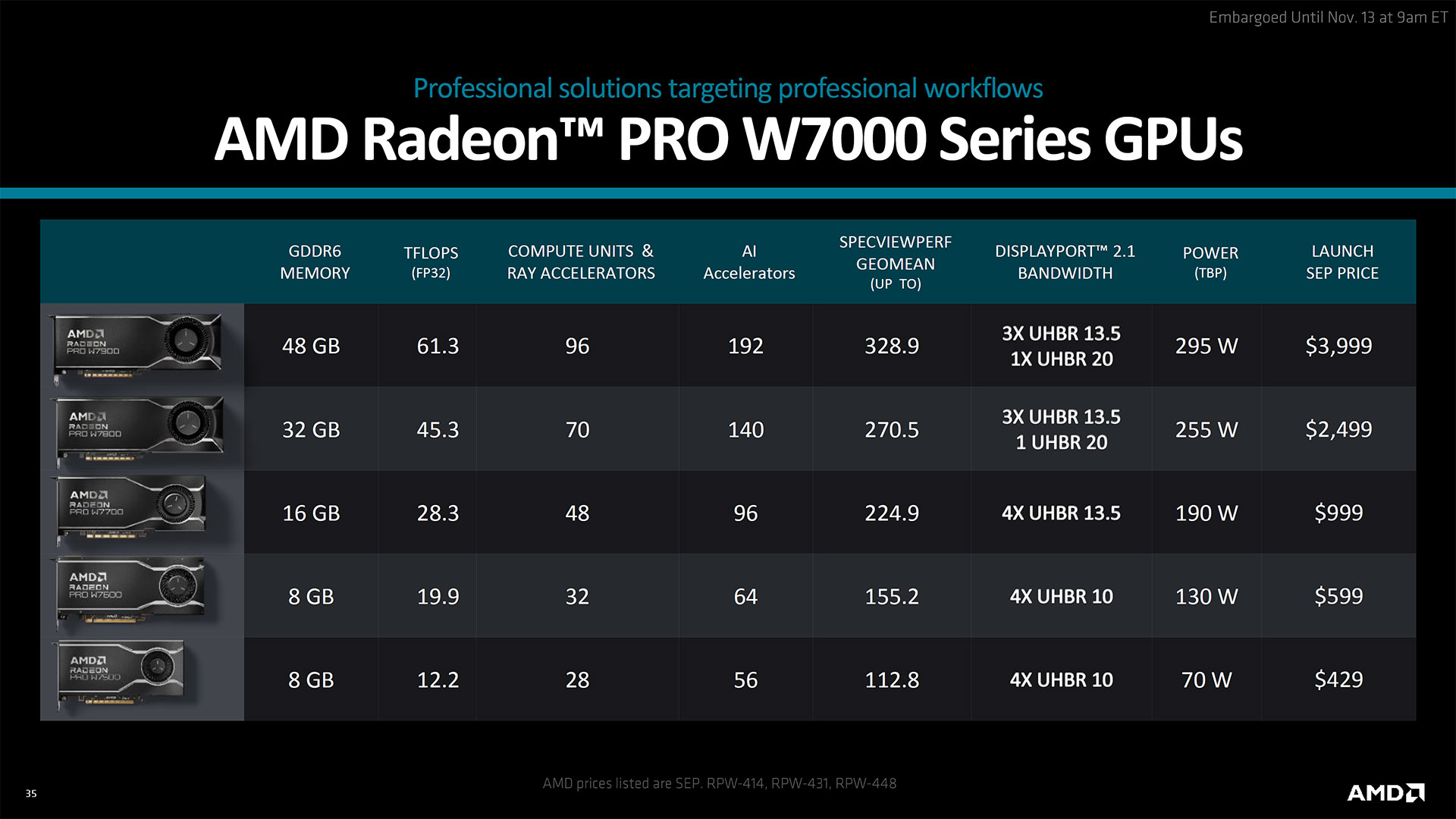
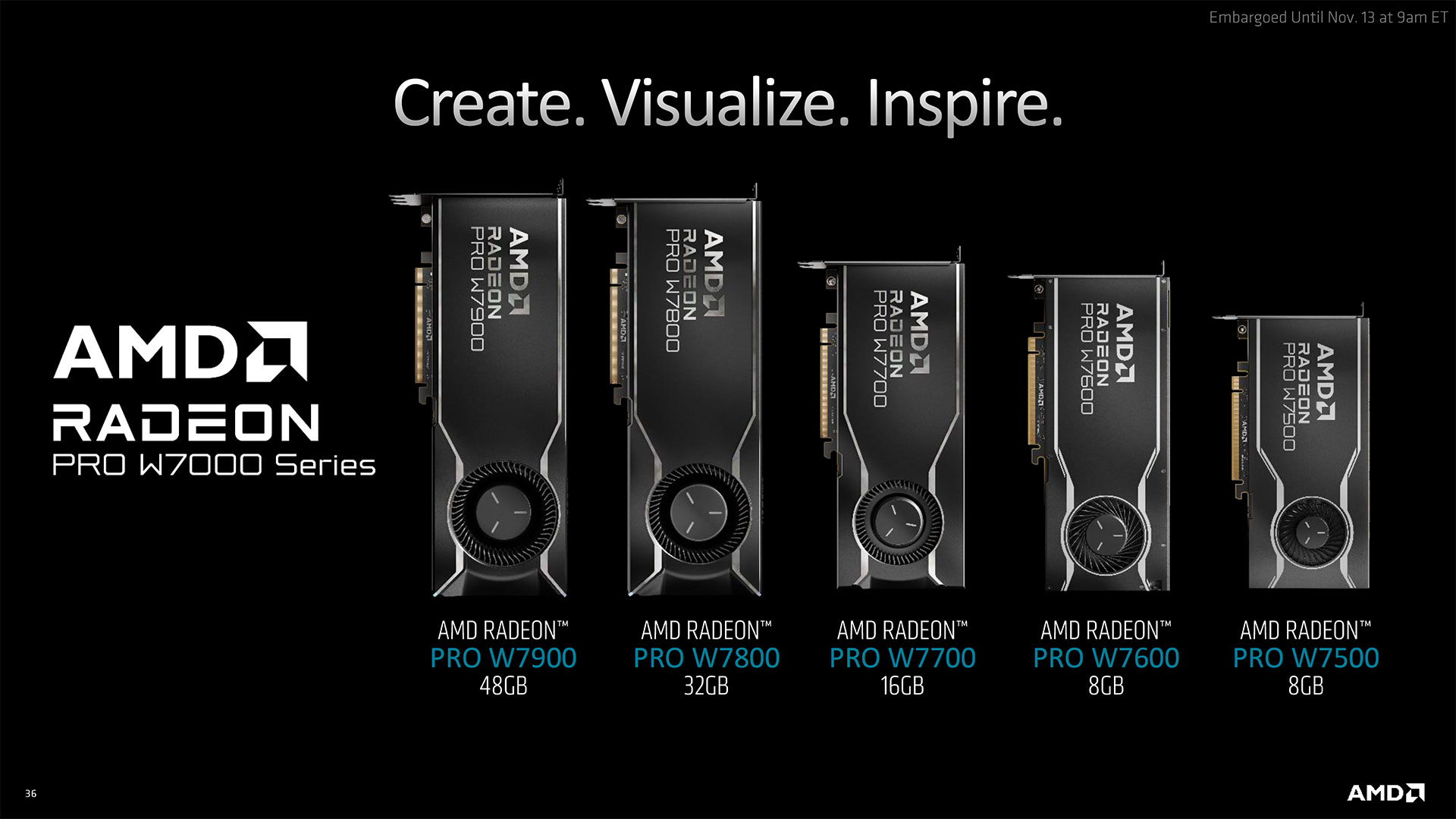
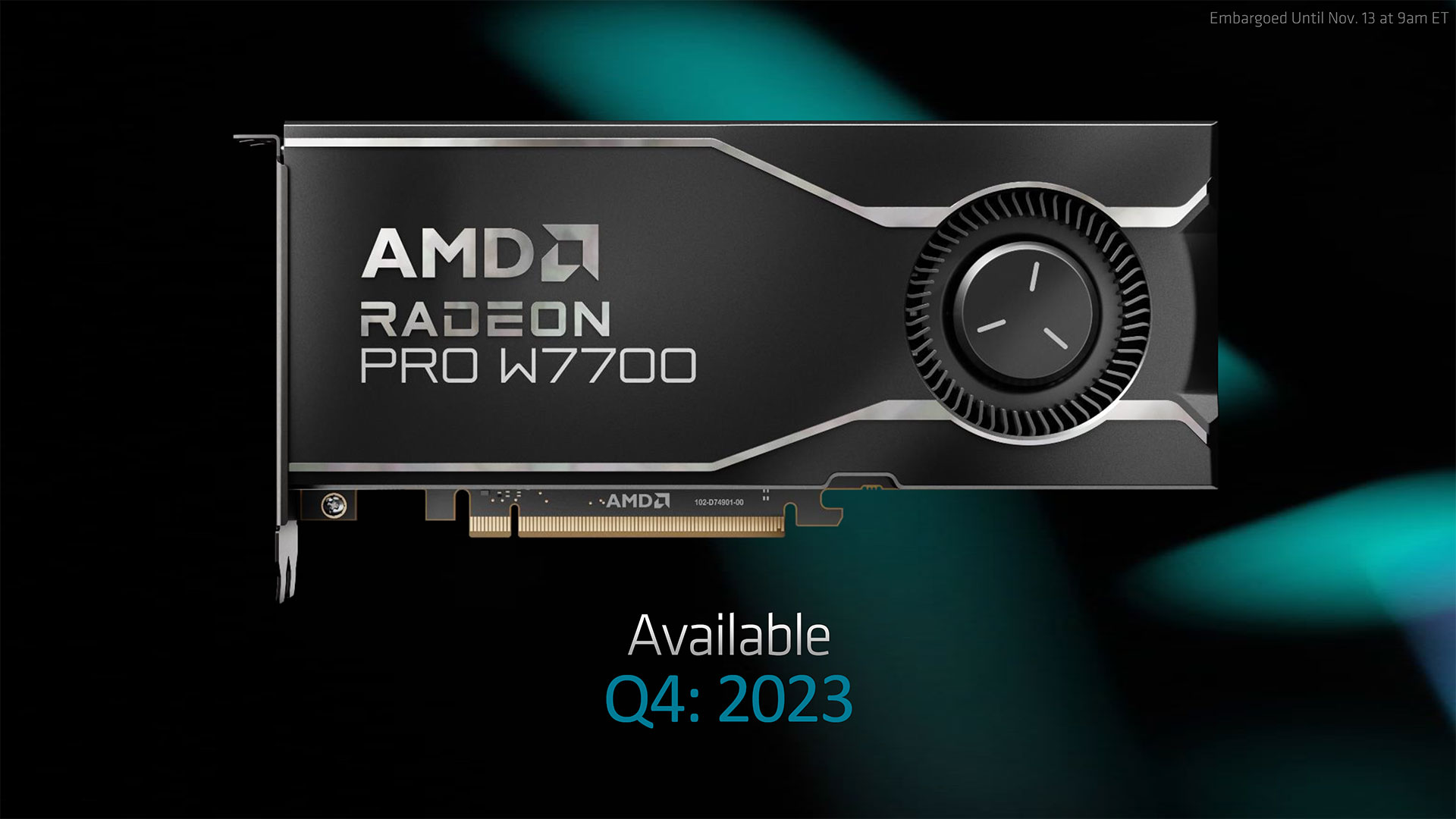


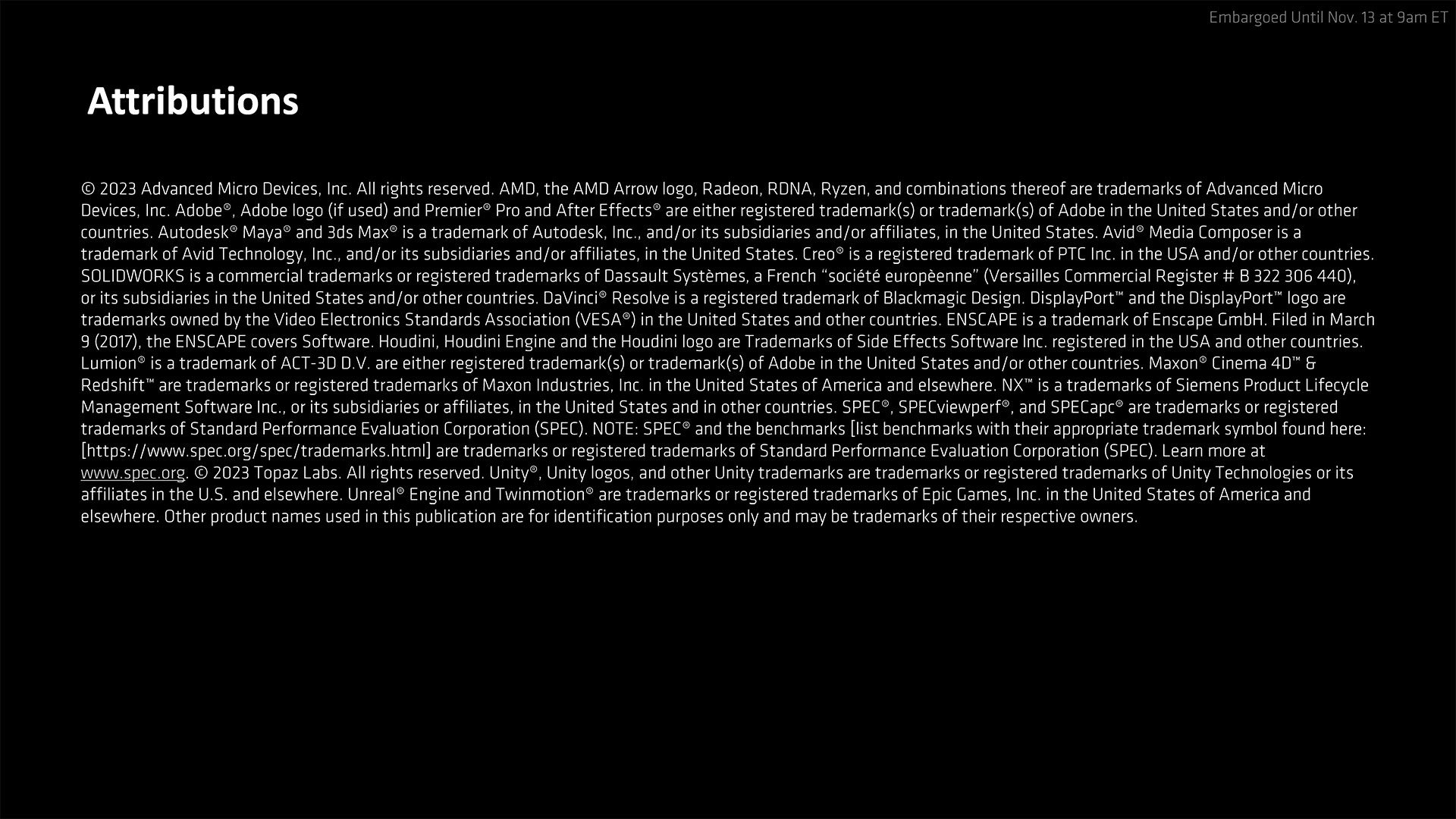

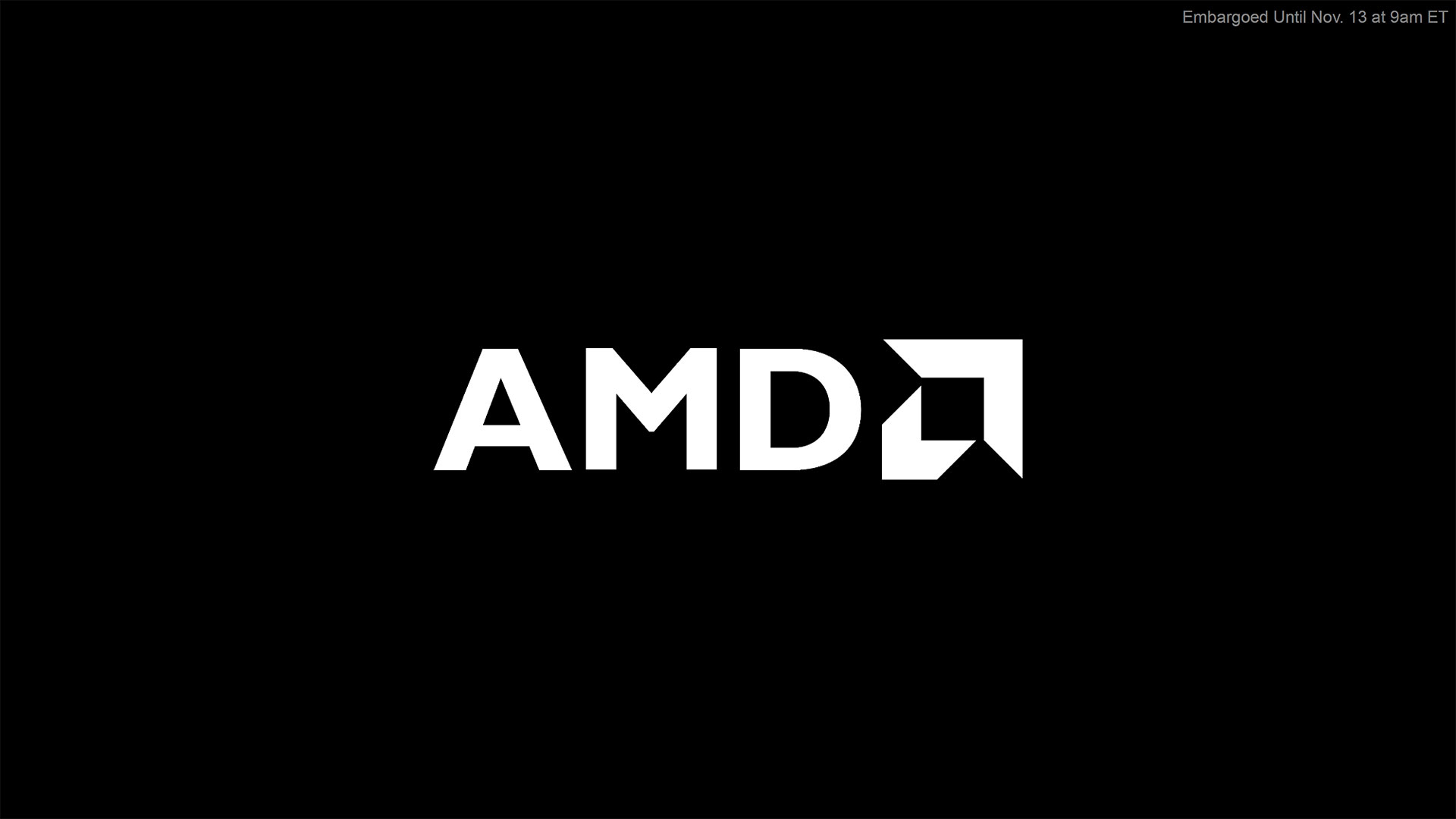
Get Tom's Hardware's best news and in-depth reviews, straight to your inbox.

Jarred Walton is a senior editor at Tom's Hardware focusing on everything GPU. He has been working as a tech journalist since 2004, writing for AnandTech, Maximum PC, and PC Gamer. From the first S3 Virge '3D decelerators' to today's GPUs, Jarred keeps up with all the latest graphics trends and is the one to ask about game performance.
-
Order 66 I don't understand why anyone would buy the W7700 when the 7900xtx is faster and cheaper.Reply -
Eximo Driver support. Same reason people buy Quadros.Reply
Once had an issue with the latest AutoCAD at a corporation, 2010 if memory serves. Mouse pointer would render behind the application with a Quadro 6000. Called up Nvidia, had a brand new driver in about 4 hours that fixed the problem. Couple days later a new driver driver was available at Nvidia.com.
Downtime is money lost.
I should add, only if you had multiple screens. So our engineers were able to unplug a monitor and keep working. They were our pilot group for new workstations on the then quite new Windows 7.